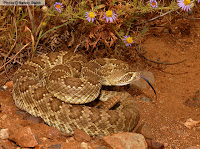For the latest Animal Attack news from
October 25, 2011 more news about animalscan be found on this link:
Snakes and their beauty.
October 25, 2011 more news about animalscan be found on this link:

Why do people fear snake? what kind of snakes are dangerous? What do I do if I am bitten by a snake? where are the most dangerous snakes found? These are some of the question many people tend to ask all about snakes their habitat, their food and how too protect oneself from dangerous snake attacks as well. A snake is never called by its name at night in many cultures, because it would hear.
Many people fear snakes. Snakes are not secretive creatures that usually retreat at the slightest disturbance. Is it that all snakes are dangerous, well depending on the type of snake in your locality and from the snake history of your area, one should not be that astonished to get a snake bite of any sort.
People have managed to tame these dangerous creatures. They sleep with snakes, they play with snakes and they even swim with snakes. That is just for the chosen few who have the sheer guts to be part of the inner world which find no harm with being in contact with snakes in their living rooms or just around their body or body parts. How a bout some snake dinner, or snake soup. Will that spoil your appetite for the rest of your entire humanity. As they say one man's meat is another man's poison but one mans snake is another mans friend for sure. As friendly as snakes can be, their venom can be as deadly as your enemy can be with all things left aside as you don't have to judge the book by its cover.
Despite the fact that many people always have instilled minds to kill a snake the moment they see it, some of these snakes are revered in many parts of the world and with many cultural differences, these dangerous snakes are not things to recon with when they show their true colors if they are provoked. Omweri, the 16-foot-long python which was originally revered by the inhabitants of the village of Wasare, in western Kenya, for its fortune-bringing powers started proving to be less of a blessing to the inhabitants of Western Kenya. The 16-foot-long python had hatched dozens of eggs, prompting fears that Wasare may be swamped by its offspring and due to the fact that heavy floods might wash Omweri (the 16-foot-long python) and its eggs away.
People with different religious background worship snakes which have many folklore's and traditions which can only be understood by the pones practicing snake worship or the powers associated with snakes. Many people try reasoning it in their eyes of their education and modern thinking it doesn't make sense to them.
You get that these are a people who still have the old blended way of temperament culture in them and it takes time for them to digest the changes that have gone on in modern life On the other hand, snakes have gone miles in making some great contributions in the ecology as far as our flora and fauna is concerned.
You get that these are a people who still have the old blended way of temperament culture in them and it takes time for them to digest the changes that have gone on in modern life On the other hand, snakes have gone miles in making some great contributions in the ecology as far as our flora and fauna is concerned.
Snakes are found in many habitats such as the rice and paddy fields of Africa just like the Nile Crocodiles who come in close contacts with many of the biggest snakes and Asia fields, The tropical rain forests, the great wetlands of North and South America, ponds, lakes, streams, the cold and hot deserts, farmland and residential areas. Within those habitats, snakes are probably some of the most recognizable animals in the world and tend to travel along the ground, swim, climb trees and bushes, and venture below ground. Although some snakes do burrow, most "snake holes" are produced by chipmunks, mice, shrews and other small mammals. Snakes have an order. Maybe it should be called a "hunting" order since large species of snakes often prey upon smaller snake species. Most of the snake species utilize these burrows for the sake of food, shelter and for laying but most species don't dig holes or burrows.
The biggest Nile Crocodile
The biggest Nile Crocodile






























0 comments:
Post a Comment